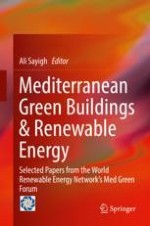2017 | OriginalPaper | Chapter
9. Sustainability of Higher Educational Buildings: Retrofitting Measures to Enhance Energy Performance—The Case of AASTMT Business Management School Building, Egypt
Authors : Mohsen Aboulnaga, Ayman Wanas, Mohamed Hammad, Mohamed Hussein
Published in: Mediterranean Green Buildings & Renewable Energy
Publisher: Springer International Publishing
Activate our intelligent search to find suitable subject content or patents.
Select sections of text to find matching patents with Artificial Intelligence. powered by
Select sections of text to find additional relevant content using AI-assisted search. powered by
